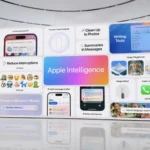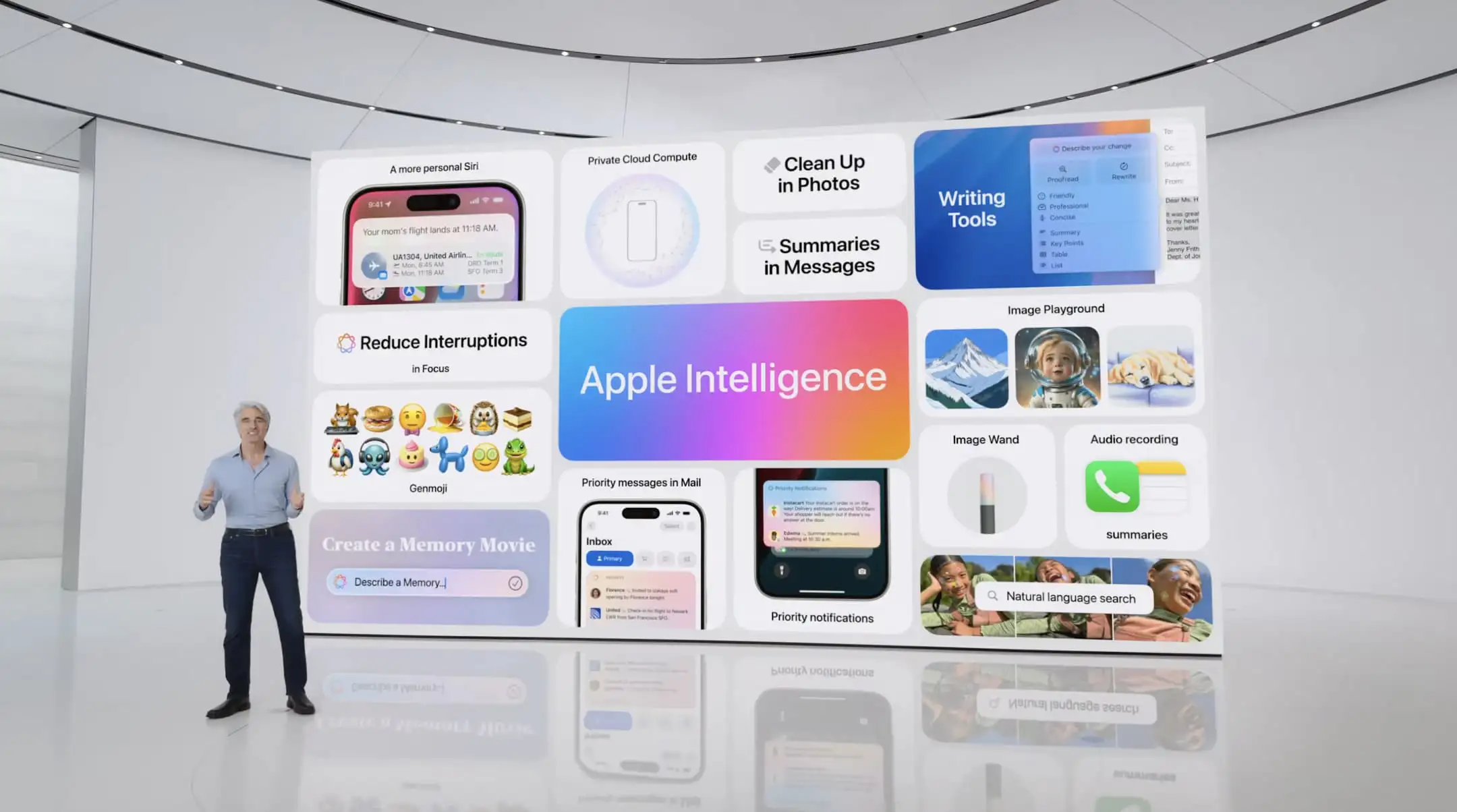

What is The Next Rise of Powerful Generative AI?
Introduction to Generative AI
Generative AI represents a significant advancement in the field of artificial intelligence, distinguished by its capacity to create new, original content. Unlike traditional AI, which primarily focuses on analyzing and categorizing existing data, generative AI possesses the unique ability to generate new data based on the patterns it learns. This includes creating text, images, music, and other forms of media by absorbing and mimicking the intricacies of the input data it is trained on.
The foundation of generative AI lies in its use of sophisticated algorithms and neural networks, particularly those known as Generative Adversarial Networks (GANs) and Variational Autoencoders (VAEs). These networks function by learning complex data distributions and producing new instances that resemble the original data. GANs, for instance, operate through a dual mechanism where two neural networks — a generator and a discriminator — work in tandem. The generator creates new content, while the discriminator evaluates its authenticity, encouraging the generator to produce increasingly realistic outputs.
In comparison to other types of AI, generative AI’s proficiency in content creation marks a notable shift. While AI systems like machine learning models excel in tasks that involve classification, prediction, and pattern recognition, generative AI transcends these boundaries by introducing creativity and innovation into the equation. This leap forward enables generative AI to not just replicate human productivity but to also augment it by exploring creative possibilities beyond predefined data sets.
Generative AI’s applications are vast and varied, reflecting its versatile nature. In text generation, models such as GPT-3 showcase the ability to author coherent essays and articles. Image generation tools can produce art and photographs that are virtually indistinguishable from those created by humans. Moreover, music generation applications can compose new pieces that mimic the style of various genres and artists, further illustrating the wide-ranging potential of generative AI.
Generative AI has undergone significant evolution since its inception, marked by pivotal milestones that have shaped its current landscape. The journey began with early foundational models like Generative Adversarial Networks (GANs), introduced by Ian Goodfellow and his colleagues in 2014. GANs are a class of machine learning frameworks where two neural networks contest with each other to produce new, synthetic instances of data that can pass for real data. This groundbreaking concept opened new avenues for creating highly realistic images, videos, and audio.
Following GANs, the development of language models achieved substantial breakthroughs with the advent of models such as OpenAI’s GPT (Generative Pre-trained Transformer). Introduced in 2018, GPT-1 demonstrated the potential of generative AI in processing and understanding natural language, with each subsequent version—GPT-2 in 2019 and GPT-3 in 2020—showcasing exponential improvements in both scale and capabilities. These models leveraged transformer architecture and vast datasets to generate coherent and contextually relevant text, enabling applications ranging from automated content creation to sophisticated conversational agents.
Another significant stride in generative AI came with advances in various domains. Notable among these was the development of Variational Autoencoders (VAEs) around the same time as GANs, which facilitated the generation of continuous data distributions. The collaboration between academic researchers and industry further accelerated progress, leading to technological feats like DeepFakes, which employ neural networks to create highly realistic, synthetic media.
More recently, advancements in AI research have given rise to hybrid systems that combine the strengths of different models. With innovations like the BERT (Bidirectional Encoder Representations from Transformers) model by Google, which introduced a new paradigm in understanding language context, generative AI continues to reach new heights. The industry’s focus on ethical considerations and application-specific improvements underscores the ongoing maturation of generative AI technologies, paving the way for future developments in multifaceted applications across various sectors.
Techniques and Architectures Used in Generative AI
Generative AI has seen substantial advancements due to the innovative techniques and architectures that drive its capabilities. Among the most prominent techniques are Generative Adversarial Networks (GANs), Variational Autoencoders (VAEs), and transformers. Each of these architectures plays a crucial role in enabling diverse and sophisticated applications of generative AI technology.
Generative Adversarial Networks (GANs) consist of two neural networks, a generator and a discriminator, that compete against each other in a zero-sum game framework. The generator creates synthetic data samples, while the discriminator evaluates them against real data. This adversarial process continues until the generator produces data that the discriminator can no longer distinguish from real data. GANs have revolutionized fields like image generation, video synthesis, and style transfer, offering impressive capabilities in creating high-quality and realistic outputs.
Variational Autoencoders (VAEs) operate on a different principle. They work by mapping input data to a latent space, where the data is represented in a lower-dimensional form. VAEs then sample points from this latent space to generate new data. Unlike traditional autoencoders, VAEs take into account the probability distributions, making the generated data more diverse and semantically meaningful. VAEs are especially useful in applications such as anomaly detection, data compression, and generating data with specific attributes.
Transformers have also become foundational in generative AI, particularly in the realm of natural language processing. Unlike recurrent neural networks (RNNs) that process sequential data step-by-step, transformers use an attention mechanism that allows them to consider all positions of the input sequence simultaneously. This parallel processing capability significantly boosts efficiency and accuracy. Transformers excel in tasks like text generation, translation, and summarization, thanks to their ability to capture context and semantic nuances effectively.
Understanding these various techniques and their unique contributions helps clarify generative AI’s multifaceted potential. Each architecture brings distinct advantages, tailored for specific types of generative tasks, and collectively, they continue to propel the field towards new horizons.
Applications of Generative AI in Various Industries
Generative AI has found a myriad of applications across different sectors, revolutionizing how businesses and organizations operate. One of the most prominent industries benefitting from generative AI is entertainment. In digital arts and animation, generative AI enables the creation of complex visual effects and hyper-realistic CGI characters, reducing both time and costs. For instance, the movie industry leverages AI to enhance graphics and even create entire scenes, providing an improved experience for viewers. A well-known example is the use of AI technology in Disney’s live-action remakes, which integrates realistic animations with live footage seamlessly.
In healthcare, the transformative power of generative AI cannot be overstated. This technology is employed in drug discovery and personalized medicine, accelerating the identification of potential drug candidates and tailoring treatments to individual genetic profiles. For example, Insitro, a biotechnology company, uses AI-driven models to identify drug targets and streamline the drug development process, significantly reducing the time required for clinical trials. Additionally, AI-generated algorithms improve diagnostic accuracy by analyzing medical images and predicting disease progression, enhancing patient outcomes.
Generative AI is also making significant strides in the finance sector. Financial institutions are using AI to predict market trends, automate trading, and manage risks more effectively. An illustrative case is JPMorgan Chase’s COIN (Contract Intelligence) platform, which employs machine learning to review legal documents and extract relevant data, vastly outpacing human review efficiency. Furthermore, AI-powered models help in detecting fraudulent activities by analyzing transaction patterns and flagging suspicious behavior, thereby safeguarding financial operations.
Marketing has seen a paradigm shift due to the advent of generative AI. By utilizing AI-generated content, marketers can create highly personalized advertisements tailored to individual consumer preferences. Companies like Persado use AI to generate compelling marketing messages, optimizing engagement and conversion rates. Moreover, AI-driven analytics provide deep insights into consumer behavior, enabling brands to craft targeted marketing strategies that resonate with their audience.
These examples underscore the vast potential of generative AI across various industries, driving innovation, enhancing efficiency, and solving complex problems that were previously insurmountable. As technology continues to evolve, its applications are likely to become even more diverse and impactful.
Ethical Considerations and Challenges

Generative AI technologies, while promising, carry significant ethical considerations that must not be overlooked. One of the foremost challenges is data privacy. As generative models rely on vast amounts of data to function effectively, ensuring the privacy and security of this data is crucial. Unauthorized data access and misuse could lead to sensitive information being exposed, thereby violating individuals’ rights to privacy.
In the realm of generative AI, deepfakes have emerged as a particularly troubling issue. These AI-generated videos and images can be manipulated to present false information, with potentially harmful repercussions in political, social, and personal contexts. The proliferation of deepfakes raises concerns about the authenticity of digital content, challenging our ability to discern between what is real and what is artificially produced.
Another significant concern revolves around potential biases in AI-generated content. AI systems are trained on existing data, which may itself be biased. Consequently, generative AI can perpetuate or even amplify these biases, leading to skewed or prejudiced outputs. This poses ethical questions about fairness and equality, especially in applications impacting hiring, law enforcement, and other critical areas.
AI developers and researchers bear a considerable responsibility to implement ethical practices throughout the development and deployment of generative AI systems. This includes adhering to strict data protection regulations, actively working to detect and mitigate biases, and developing solutions to prevent the misuse of AI technologies like deepfakes. Continuous engagement with ethicists, policymakers, and the broader community is essential in ensuring that generative AI systems contribute positively to society.
Considering these ethical challenges, it is imperative for stakeholders in the AI field to prioritize transparency and accountability. Developing robust ethical frameworks and guidelines will help navigate the complex landscape of generative AI, ultimately guiding its development towards advancements that are beneficial and fair for all members of society.
Advancements and Innovations in Generative Models
The domain of generative AI has experienced remarkable strides in recent years, ushering in cutting-edge advancements and innovative applications. Thanks to profound improvements in algorithms and computational power, generative models have shown unprecedented capabilities. Among these, Generative Adversarial Networks (GANs) have dominated the landscape, evolving rapidly since their inception. The development of StyleGAN, an innovation that allows for more realistic and high-resolution image synthesis, stands as a testament to this progress. This model leverages concurrent hierarchical structures to refine generated imagery, pushing the boundaries of visual authenticity.
Another noteworthy development is in natural language processing (NLP).
Text generation models such as GPT-3 have revolutionized the field, boasting over 175 billion parameters
that enable the production of indistinguishably natural text. The capabilities of these models are astoundingly versatile, underpinning applications that range from chatbots and code generation to academic research and creative writing. GPT-3’s ability to understand context and generate coherent, contextually appropriate responses exemplifies the leaps made in NLP-driven generative AI.
Advancements are not confined to visual and textual domains alone. In the realm of audio, models like WaveNet have emerged as revolutionary tools. WaveNet, with its deep neural network architecture, generates remarkably natural-sounding speech, taking synthesized audio to new heights. The implications of such technology extend to areas
like virtual assistants and automated customer service, enhancing user experience through human-like interactions.
Furthermore, interdisciplinary research has paved the way for hybrid models integrating multiple modalities, such as text-to-image generation exemplified by DALL-E. This OpenAI model captures complex relationships between textual descriptions and corresponding visual elements, opening avenues in fields like design, marketing, and entertainment. The convergence of various domains in hybrid models epitomizes the holistic progress in generative AI research.
These breakthroughs highlight an era of swift innovation and profound possibilities. As generative models continue to mature, they promise to transform various sectors, demonstrating the boundless potential of artificial intelligence.“`html
Future Prospects of Generative AI
Generative AI has made significant strides in recent years, and its trajectory suggests even more transformative developments on the horizon. Emerging trends indicate that generative AI will continue evolving, influencing a multitude of sectors including healthcare, entertainment, and finance. One crucial aspect that experts anticipate is the enhancement of human-computer interactions through more realistic and context-aware models. This progression could lead to applications where generative AI efficiently collaborates with humans, augmenting creative processes and decision-making abilities.
Technological advancements in this domain will likely focus on improving the efficiency, accuracy, and scalability of AI models. Innovations such as quantum computing and neuromorphic engineering will play pivotal roles in overcoming current computational limitations, thereby catalyzing further innovations in AI.
Breakthroughs in generative adversarial networks (GANs) and transformers are anticipated to refine the quality of generated content,
making synthetic media indistinguishable from what is real.
This may raise new ethical concerns and necessitate robust guidelines to manage misuse while maximizing benefits.
The broader implications for society are immense. Generative AI can revolutionize industries by automating complex and mundane tasks, leading to increased productivity and cost reductions. In healthcare, AI-generated predictive models could significantly enhance diagnostic accuracy and personalized treatment plans. However, the burgeoning capabilities of generative AI also introduce challenges, particularly concerning data privacy, security, and socio-economic disparity. Regulatory frameworks will need to adapt to ensure ethical standards while fostering innovation.
In daily life, generative AI could integrate deeply into personal and professional spheres, offering customized experiences and intelligent assistance. From creating art and music to optimizing business processes, the potential applications are vast. Yet, the transition will require a concerted effort across various stakeholders
to address challenges and harness generative AI’s full potential responsibly.
As we move forward, the collaborative synergy between humans and AI will define success, fostering a future where technology amplifies human creativity and problem-solving capabilities.
Conclusion and Final Thoughts
The rise of generative AI marks a pivotal chapter in technological advancement.
Throughout our exploration, we delved into the remarkable capabilities of generative AI,
exemplified by its ability to create compelling text, art, and even music.
By harnessing vast datasets and sophisticated algorithms,
this technology exhibits a new frontier of innovation that can shape industries as diverse as entertainment, manufacturing, and healthcare.
Beyond its proficient generative abilities,
AI stands as a testament to the progress we’ve made in machine learning and neural networks. The transformational impact it holds is both vast and nuanced. Businesses can leverage generative AI to streamline operations, from designing intricate products to revolutionizing customer service interactions.
On the cultural front, AI-generated art and music demonstrate a pioneering blend of creativity and computation,
pushing the boundaries of what we consider artistic expression.
However, while the benefits are numerous, so too are the challenges and considerations that accompany the integration of generative AI. Ethical and moral concerns loom large, particularly regarding the authenticity and originality of AI-created content. Issues related to data privacy, bias in AI algorithms,
and the potential for misuse underscores the need for a responsible and transparent approach to AI development.
As we forge ahead in this rapidly evolving field,
it becomes imperative to balance the excitement of innovation with a conscientious mindset. Policymakers, developers, and stakeholders must collaborate to ensure the responsible growth of generative AI. This involves crafting regulatory frameworks that safeguard societal interests while fostering a conducive environment for technological progress.
In conclusion, generative AI represents a profound advancement with the potential to redefine multiple spheres of human activity. Its continued evolution promises higher efficiencies and new creative horizons. It also calls for judicious development and ethical considerations to truly harness its capabilities for the collective good.
Here are some sources you can use for the topic “The Rise of Generative AI”:
- Forbes – “The Rise of Generative AI: A Revolution in Creativity and Automation”
Forbes - MIT Technology Review – “How Generative AI is Changing Everything”
MIT Technology Review - Harvard Business Review – “Generative AI Will Change Your Business. Here’s How to Adapt.”
Harvard Business Review - The New York Times – “The Creative Power of Generative AI”
The New York Times - McKinsey & Company – “The Potential of Generative AI and How Companies Can Harness It”
McKinsey
These articles provide a good overview and insights into the impact, potential, and future of generative AI.
by TechTaker
Related Posts
tlover tonet
Greetings! I know this is kind of off topic but I was wondering which blog platform are you using for this website? I’m getting fed up of WordPress because I’ve had problems with hackers and I’m looking at options for another platform. I would be great if you could point me in the direction of a good platform.
droversointeru
of course like your website but you need to test the spelling on several of your posts. Many of them are rife with spelling issues and I find it very troublesome to tell the reality then again I¦ll surely come again again.
drover sointeru
This is a topic close to my heart cheers, where are your contact details though?
zoritoler imol
Some really fantastic content on this web site, appreciate it for contribution. “There is one universal gesture that has one universal message–a smile” by Valerie Sokolosky.
sprunkiy.com
I’ve always loved how games like Incredibox let you mix music and creativity. The Sprunki Incredibox takes that even further with fresh beats and cool visuals-definitely worth a play!
mailings
I really enjoyed reading your article. The way you’ve structured the content is very clear and engaging, making complex ideas easy to understand. It’s refreshing to see such well-researched and thoughtfully written material. Looking forward to reading more from you soon!










6 comments